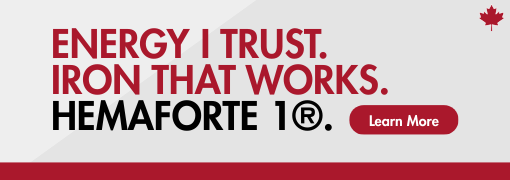The Facts
Bell's palsy is a sudden facial paralysis that usually strikes all or part of one side of the face. Men or women of any age can suffer Bell's palsy. Your risk of experiencing Bell's palsy in our lifetime is about 1 in 60. Few people are struck by Bell's palsy more than once in their lives.

Bell's palsy can be a frightening experience, appearing suddenly with symptoms that cause many people to think they're having a stroke. In reality, stroke symptoms are quite different, and Bell's palsy is a comparatively harmless condition that usually clears up without treatment.
Causes
The exact cause of Bell's palsy is unknown, but most researchers believe that the most likely cause is a viral infection (herpes simplex or herpes zoster virus) that causes swelling and inflammation of the facial nerve. Although research has found that the herpes simplex 1 virus (the virus that causes cold sores) is present, in many cases a direct link to the virus has not been proven.
Some people are more prone to Bell's palsy than others. Your risk is higher if you have one of these conditions:
- a common cold or some other upper respiratory ailment
- cold sores
- diabetes
- influenza
- pregnancy (particularly the third trimester)
Symptoms and Complications
Bell's palsy usually appears suddenly, often overnight. The primary symptom is weakness and paralysis on one side of the face. You may find that you can't make the same expressions as usual. Typically, you'll be unable to fully close one eye. Other possible symptoms include:
- altered sense of taste
- facial pain, pain in or behind the ear (in fewer than 50% of cases)
- no tears in one eye
- sensitivity to noise on the affected side
- numbness or heaviness in the face
Stroke is associated with other symptoms such as a severe headache, severe dizziness, difficulty speaking, numbness or weakness in the arms or legs, and blurred vision. With Bell's palsy you may have some trouble talking, but it's purely muscular, and is not caused by bleeding or a blood clot in the brain. Other conditions that can cause facial paralysis include Ramsay Hunt syndrome, Lyme disease, and brain tumour.
Usually, the symptoms appear at once. Occasionally, they worsen over a few days. Steady, progressive paralysis over several weeks is not a sign of Bell's palsy.
The most serious complication seen in Bell's palsy is permanent mild facial paralysis. This is found in a minority of cases. Overall, about 80% recover completely over weeks to months, and most of the rest improve.
Another complication is increased risk of stroke. Stroke prevention and follow-up is recommended.
Some people don't recover completely. This is more likely in people who are older than 60 or who are experiencing weakness or paralysis on both sides of the face.
People who don't recover completely may be left with one or more of the following symptoms:
- abnormal blink
- asymmetrical smile
- buccinator paralysis (food caught in cheek of paralyzed side)
- corneal damage
- drooling of liquids from corner of paralyzed mouth
- dry eye
- excessive perspiration
- frozen muscle in the nostril area
- hyperacusis (perceiving sounds as unusually loud)
- impaired taste
- impaired speech
- synkinesis (involuntary movement associated with a voluntary movement)
Making the Diagnosis
Bell's palsy is diagnosed based on its symptoms and physical signs. There are no specific tests to diagnose Bell's palsy, but your doctor will perform a thorough physical examination and may order certain tests (e.g., blood tests) to rule out other medical conditions that can cause facial paralysis. Additional tests such as CT scans or MRI scans are usually not necessary, but may be used to rule out other medical causes of facial paralysis.
Bell's palsy must be differentiated from Lyme disease, Guillain-Barré syndrome, sarcoidosis, parotid tumor, and stroke. Lymphoma can also in rare instances be a cause of facial paralysis.
Treatment and Prevention
Although Bell's palsy usually resolves on its own without treatment, doctors typically recommend treatment with corticosteroids (e.g., prednisone*) and sometimes antiviral medications (acyclovir or valacyclovir). Corticosteroids are used to help reduce swelling around the nerve and are usually taken for about 7 to 10 days. Some limited evidence shows that antiviral medications are helpful when they are given along with prednisone, but when they are used alone, they are not effective. More studies are needed to clarify the role of antiviral medications in the treatment of Bell's palsy.
Everyone with Bell's palsy needs special protection for their open eye. It will usually remain open for at least a week, and may not be producing tears. Eyedrops (artificial tears), eyepatches, and special lotions at night are used. These almost always prevent long-term damage to the surface of the eye (cornea).
In the past, a surgical technique called decompression of the seventh nerve was sometimes used. It's less common now, as many experts believe inflammation and not compression of the nerve is the root of the problem.
Your doctor may also recommend physical therapy (e.g., exercises for face muscles), but more studies are needed to assess its benefit.
There is no known way of preventing Bell's palsy.
*All medications have both common (generic) and brand names. The brand name is what a specific manufacturer calls the product (e.g., Tylenol®). The common name is the medical name for the medication (e.g., acetaminophen). A medication may have many brand names, but only one common name. This article lists medications by their common names. For information on a given medication, check our Drug Information database. For more information on brand names, speak with your doctor or pharmacist.
All material copyright MediResource Inc. 1996 – 2025. Terms and conditions of use. The contents herein are for informational purposes only. Always seek the advice of your physician or other qualified health provider with any questions you may have regarding a medical condition. Source: www.medbroadcast.com/condition/getcondition/Bells-Palsy


